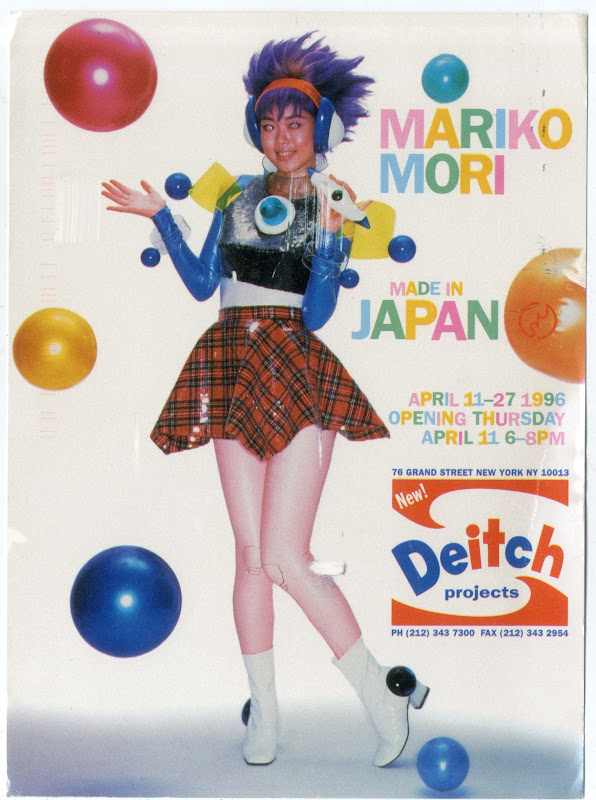
A promotional postcard from Mori’s 1996 solo exhibition ‘Made in Japan’ in New York, curated by American art dealer and curator Jeffery Deitch. The exhibition showcases Mori’s multimedia works which spotlight the societal conflicts and compromises in a contemporary Japan undergoing rapid technological advancements and pivotal cultural transformations. Mori’s images depict a developing harmony between technology and humanity in Japanese society. It is essential to contextualize this narrative by identifying the complex western attitude towards Japan during this period; a threatening yet fascinating force which wielded an indeterminable power in cultural capital and global influence. How might Mori’s work, and the curatorial positioning of it challenge harmful stereotypes rather than perpetuate them?
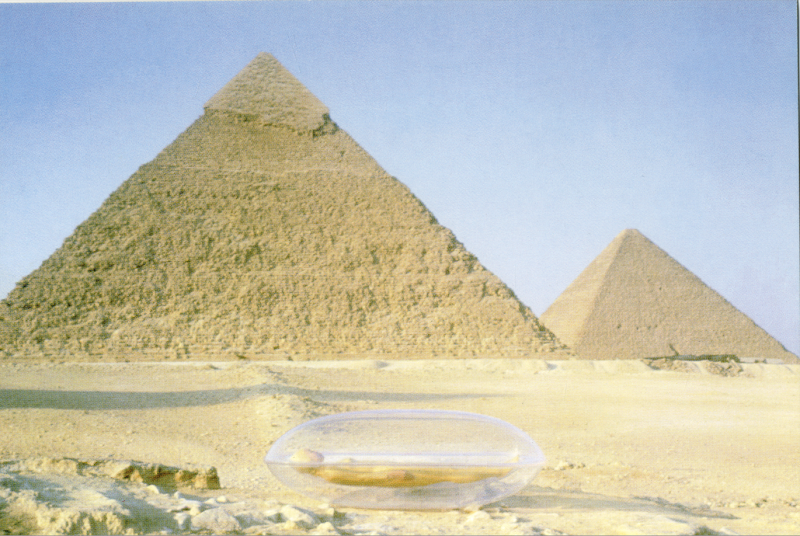
A postcard in promotion of her Exhibition ‘Beginning of the End’, where Mori explored technology, spirituality, and global culture. It depicts a body laid down, encased in a plastic bubble set before the Pyramids of Giza. Its smooth, synthetic finish is a stark contrast against the weathered ancient exterior of the pyramids. These are the two focal points of the image, its composition emphasises the tension between materials of ‘futurity’ and the historical. It stands as a meditation on human ambition across history as it reflects upon the evolution of human identities and progress.
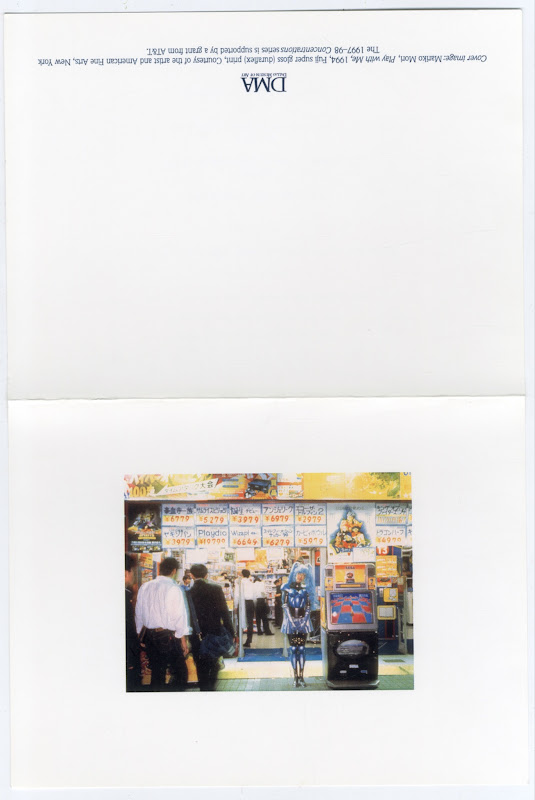
Having returned from a Western environment, Mariko Mori observed the gender inequality present within Japan and began her series ‘Play with me’, later featured in the exhibition “Made in Japan”. In the postcard, Mori stands before a toy store performing as a sexualised cyborg— placing herself as yet another figurine to be bought. Mariko Mori’s hyperfeminine personas are used as satirical commentary on gender roles, yet for the Western gaze, the sarcasm present within the performance could easily be overlooked. Instead, the works could continue to perpetuate sexualisations of East Asian women. Due to the prevalence of this interpretation, one has to question whether Mori consciously continued playing into these stereotypes.
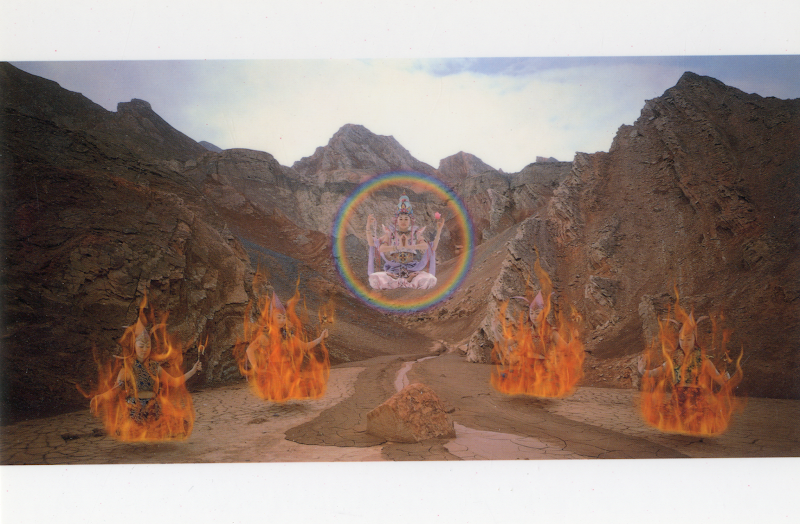
A postcard from Mori’s 1998 solo exhibition at the Serpentine Gallery in London, featuring ‘Burning Desire’ (1996-98). The image was shot at the Gobi Desert, located in northern China and southern Mongolia; a site that holds religious significance in Buddhist beliefs. Mori is photoshopped to appear as a Buddhist deity in the centre and the entities engulfed in flames. The religious scene utilizes Tibetan Buddhist motifs, such as the Tibetan monk hats and the rainbow halo. Mori aims to mobilize tradition with the most contemporary mechanisms available to her, bringing the past into the present and the future. It is an essential curatorial responsibility to identify the original inspirations behind modern interpretations, so that these depictions are not perceived as simply aesthetic adaptations, but rather an intentional evocation of beliefs rooted in ancient traditions and histories.
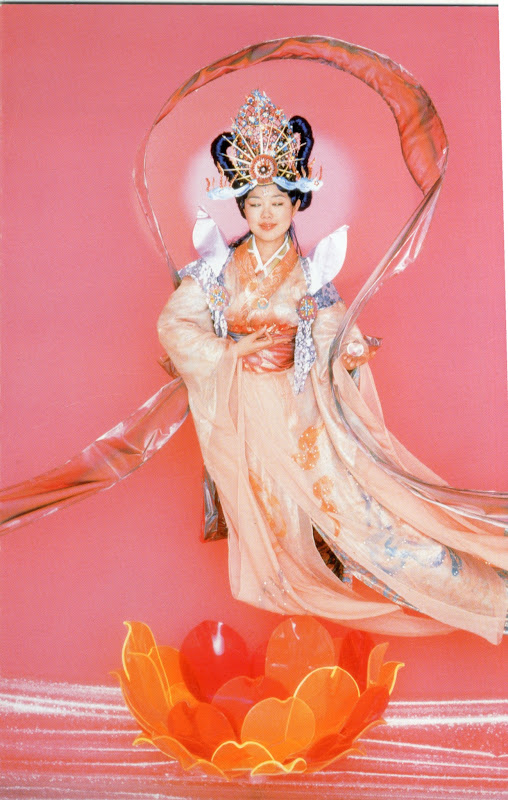
Exhibition cards from Mori’s first comprehensive solo showcase at the Serpentine Gallery in London marked a significant turning point of her career; as she was beginning to adopt three-dimensional mediums following her prominent photography and multimedia works from the early 1990s. Mori was evidently gaining significant recognition from notable arts institutions in Europe during this time, as she will go on to be exhibited at the Galerie Perrotin in Paris the following year.
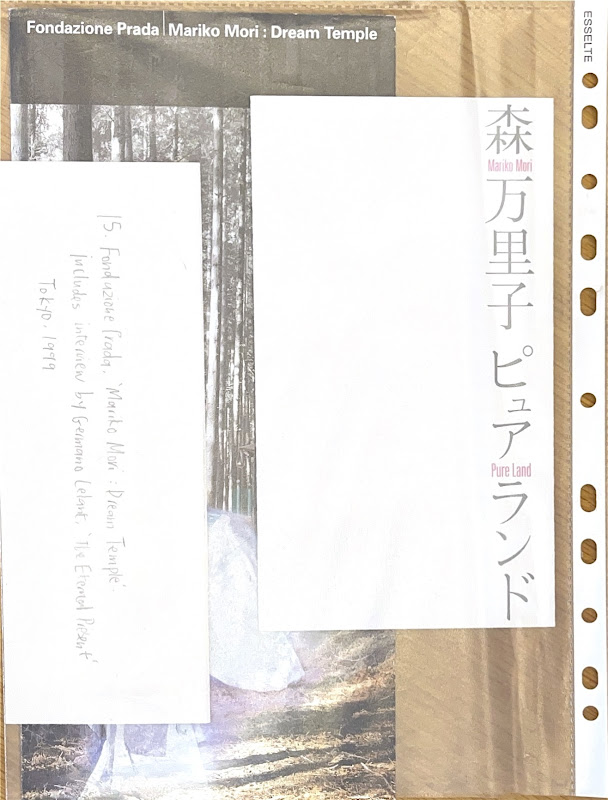
Exhibition card from Mori’s show at the Museum of Contemporary Art Tokyo in 2002, co-curated by Fondazione Prada. This era of Mori’s career is representative of her transition into exploring large scale sculptures and themes relating to outer space and transhumanism. The exhibition took place in the same year as her seminal installation piece Wave UFO which materialises Mori’s ongoing explorations of cosmic interconnections and spiritual transcendence.

A pamphlet from Mariko Mori’s 1999 exhibition at the Fondazione Prada in Milan, Italy. It contains an interview of Mori by Germano Celant (1940-2020): renowned Italian curator and the artistic director of Fondazione Prada at the time. The conversation centres around Dream Temple (1999); Mori’s architectural conception commissioned for the exhibition, and provides a profound insight into her visionary experimentations of materializing a state of enlightenment, whilst reimagining traditional Japanese architecture within an Eastern philosophical and spiritual context. ‘Utopia’ was a key concept within Celant’s first curatorial projects, and the Fondazione Prada was “created to shape an intellectual utopia that marked the identity of the cultural institution founded in 1993.” (taken from the Fondazione Prada website). It’s important to recognize that the foundation was formed by elite figures from the fashion industry, and to contest their definition of an ‘intellectual utopia’. Mori’s world-building mechanisms often fail to confront the nuances of globalization, cultural homogenization and appropriation. In the western art world, her work was being linked to ideas of utopia and fantasy. What is ‘utopia’ and who has the power to name it?